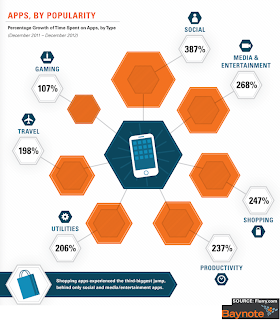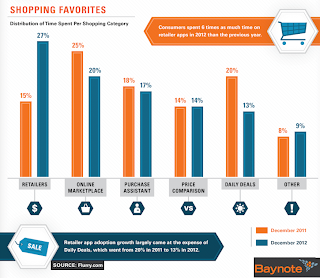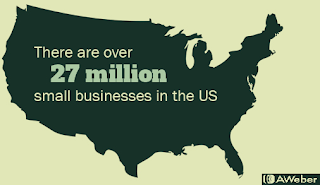Make Life Easier with Mobile Payments
These days we can forget our wallet at home but not our smartphones. Mobile devices are dominating the users’ lives. Their world exists in these magical devices, where in they can connect with their family and friends, keep themselves updated on events happening around them. They have adapted themselves to all the features introduced in the mobile devices.
And like so many other things, users welcomed the mobile payment feature and adopted it with a big smile. In a recent study by Carlisle & Gallagher, a consultancy group, “48 percent of respondents in the United States expressed interest in some form of a mobile wallet.” The number clearly shows that customers are looking forward to innovations, in the form of convergence of marketing and payment in the tech field. They too are inclined in turning their mobile devices as the powerhouse through which they can share, connect and now pay their bills. And why not? It is another feature in the mobile devices which will make their lives easier and even more comfortable.
What are Mobile Payments?
eMarketer defines Mobile Payments as, “Transactions for goods or services made by scanning, tapping, swiping or checking in with a mobile phone at the point of sale.” For instance, users can install a mobile payment app such as Google Wallet or Isis on an NFC-equipped phone and can pay from the account by tapping the phone on an NFC payment terminal.
Mobile payment apps enable users to use their smartphones to:
The number of mobile payment users is growing rapidly. It is estimated that the number of mobile payment users will increase to 13.3 million users as compared to 7.9 million users in 2012. And by 2016 there will be 48.1 million users in the United States. [fig.1]
According to a new study by Yankee Group, “The volume of transactions made via mobile will also continue to grow and is expected to exceed $1 trillion by 2015.”
“Over 7 million customers now use one of our mobile payment apps, translating into 2.1 million mobile payment transactions each week, with hundreds of thousands of additional Starbucks mobile app downloads each week,” says the Starbucks chief executive, Howard Schultz. And he gives the credit of this success to Starbucks gifts card, which is increasingly growing popular among their users.
Starbucks is putting in a lot of efforts in the form of, the Starbucks mobile app, Apple’s Passbook and Square Wallet in their mobile digital initiatives. And now the coffee shop chain is reaping the benefits of understanding the importance of mobile payment solutions.
ISIS mobile wallet – Users can store their credit and debit card information, reloadable ISIS cash card, loyalty cards, personalized offers, account details and purchase records.
Pay with Square app – Want to go for a cup of coffee? Just browse your favorite local coffee shop and look for square enabled merchants near your location in the app. Just say your name at the payment counter and you are ready to clear your bills.
This easy to use app works with iOS and Android phones. The app requires users to link their credit card information and their image in the app. And at the checkout counter tell your name and the square enabled merchant will click your picture to charge you.
Venmo – Venmo is a simple iPhone, Android and Blackberry phone app, which is getting popular for its sharing feature. Users can store their credit card and bank account information and can pay or share bills with their friends. Just enter the name, phone number or email of any of your friend in your contact list, enter the amount and click pay. In case if the receiver is not using the app, the person will get a message to set up an account to claim the amount.
Paypal – Just like Venmo, Paypal let users send money to other Paypal users and track previous transactions’ details. The app is available for both iOS and Android.
The picture [fig. 2] below highlights the differences between the big four mobile wallet apps, including who supports them, what’s unique about them, in which locations they are active, and on which technology they rely on.
Convenient and safe online payment solutions have revolutionized the way consumers shop. A Forrester Research predicts that by the end of 2017, U.S. mobile users will spend $90B via mobile payments, a 48% increase over the $12.8B spent in 2012.
With more and more mobile payment solutions coming to the fore, the brick-and-mortar businesses are undergoing through major transformations. And businesses opting for simple and convenient mobile payment solutions are expected to be the winners in terms of adoption and transactions.
For more information on iPhone app developers and marketing strategy send in your email to marketing@ymedialabs.com
Does Your Brand Own a Unique Place on Second Screen?
Invent your Own Marketing Trends in 2013
These days we can forget our wallet at home but not our smartphones. Mobile devices are dominating the users’ lives. Their world exists in these magical devices, where in they can connect with their family and friends, keep themselves updated on events happening around them. They have adapted themselves to all the features introduced in the mobile devices.
And like so many other things, users welcomed the mobile payment feature and adopted it with a big smile. In a recent study by Carlisle & Gallagher, a consultancy group, “48 percent of respondents in the United States expressed interest in some form of a mobile wallet.” The number clearly shows that customers are looking forward to innovations, in the form of convergence of marketing and payment in the tech field. They too are inclined in turning their mobile devices as the powerhouse through which they can share, connect and now pay their bills. And why not? It is another feature in the mobile devices which will make their lives easier and even more comfortable.
What are Mobile Payments?
eMarketer defines Mobile Payments as, “Transactions for goods or services made by scanning, tapping, swiping or checking in with a mobile phone at the point of sale.” For instance, users can install a mobile payment app such as Google Wallet or Isis on an NFC-equipped phone and can pay from the account by tapping the phone on an NFC payment terminal.
Mobile payment apps enable users to use their smartphones to:
- Make online purchases,
- Make in-store payments,
- Receive offers,
- And to manage their debit cards, credit cards, reward/loyalty/discount cards
- Number of mobile payment users
The number of mobile payment users is growing rapidly. It is estimated that the number of mobile payment users will increase to 13.3 million users as compared to 7.9 million users in 2012. And by 2016 there will be 48.1 million users in the United States. [fig.1]
According to a new study by Yankee Group, “The volume of transactions made via mobile will also continue to grow and is expected to exceed $1 trillion by 2015.”
 |
| Fig. 1 |
Retailers Offering Mobile Payment Solutions
Big retailers such as, 7-Eleven, Best Buy, CVS and Wal-Mart all are offering easy mobile payment solutions to their customers. However, Starbucks is leading the mobile payment battle as the company said its customers do 2.1 million mobile transactions at Starbucks every week—about 5% of all its sales transactions in U.S. stores.“Over 7 million customers now use one of our mobile payment apps, translating into 2.1 million mobile payment transactions each week, with hundreds of thousands of additional Starbucks mobile app downloads each week,” says the Starbucks chief executive, Howard Schultz. And he gives the credit of this success to Starbucks gifts card, which is increasingly growing popular among their users.
Starbucks is putting in a lot of efforts in the form of, the Starbucks mobile app, Apple’s Passbook and Square Wallet in their mobile digital initiatives. And now the coffee shop chain is reaping the benefits of understanding the importance of mobile payment solutions.
Most popular Mobile Payment Apps
Google Wallet – A Google Wallet app let users store their current credit and debit cards. And to make a payment, all they have to do is wave their smartphone or tap it on the NFC enabled phone or machine. Users can also redeem discount points stored in the app just by tapping on their phone while paying at retail stores such as Macy’s or Old Navy.ISIS mobile wallet – Users can store their credit and debit card information, reloadable ISIS cash card, loyalty cards, personalized offers, account details and purchase records.
Pay with Square app – Want to go for a cup of coffee? Just browse your favorite local coffee shop and look for square enabled merchants near your location in the app. Just say your name at the payment counter and you are ready to clear your bills.
This easy to use app works with iOS and Android phones. The app requires users to link their credit card information and their image in the app. And at the checkout counter tell your name and the square enabled merchant will click your picture to charge you.
Venmo – Venmo is a simple iPhone, Android and Blackberry phone app, which is getting popular for its sharing feature. Users can store their credit card and bank account information and can pay or share bills with their friends. Just enter the name, phone number or email of any of your friend in your contact list, enter the amount and click pay. In case if the receiver is not using the app, the person will get a message to set up an account to claim the amount.
Paypal – Just like Venmo, Paypal let users send money to other Paypal users and track previous transactions’ details. The app is available for both iOS and Android.
Mobile wallets: A Comparison
The picture [fig. 2] below highlights the differences between the big four mobile wallet apps, including who supports them, what’s unique about them, in which locations they are active, and on which technology they rely on.
 |
| Fig. 2 |
Mobile Payments : The Future of Online Commerce
Convenient and safe online payment solutions have revolutionized the way consumers shop. A Forrester Research predicts that by the end of 2017, U.S. mobile users will spend $90B via mobile payments, a 48% increase over the $12.8B spent in 2012.
With more and more mobile payment solutions coming to the fore, the brick-and-mortar businesses are undergoing through major transformations. And businesses opting for simple and convenient mobile payment solutions are expected to be the winners in terms of adoption and transactions.
For more information on iPhone app developers and marketing strategy send in your email to marketing@ymedialabs.com
You might also like:
Does Your Brand Own a Unique Place on Second Screen?
Invent your Own Marketing Trends in 2013




.png)



.png)




























































